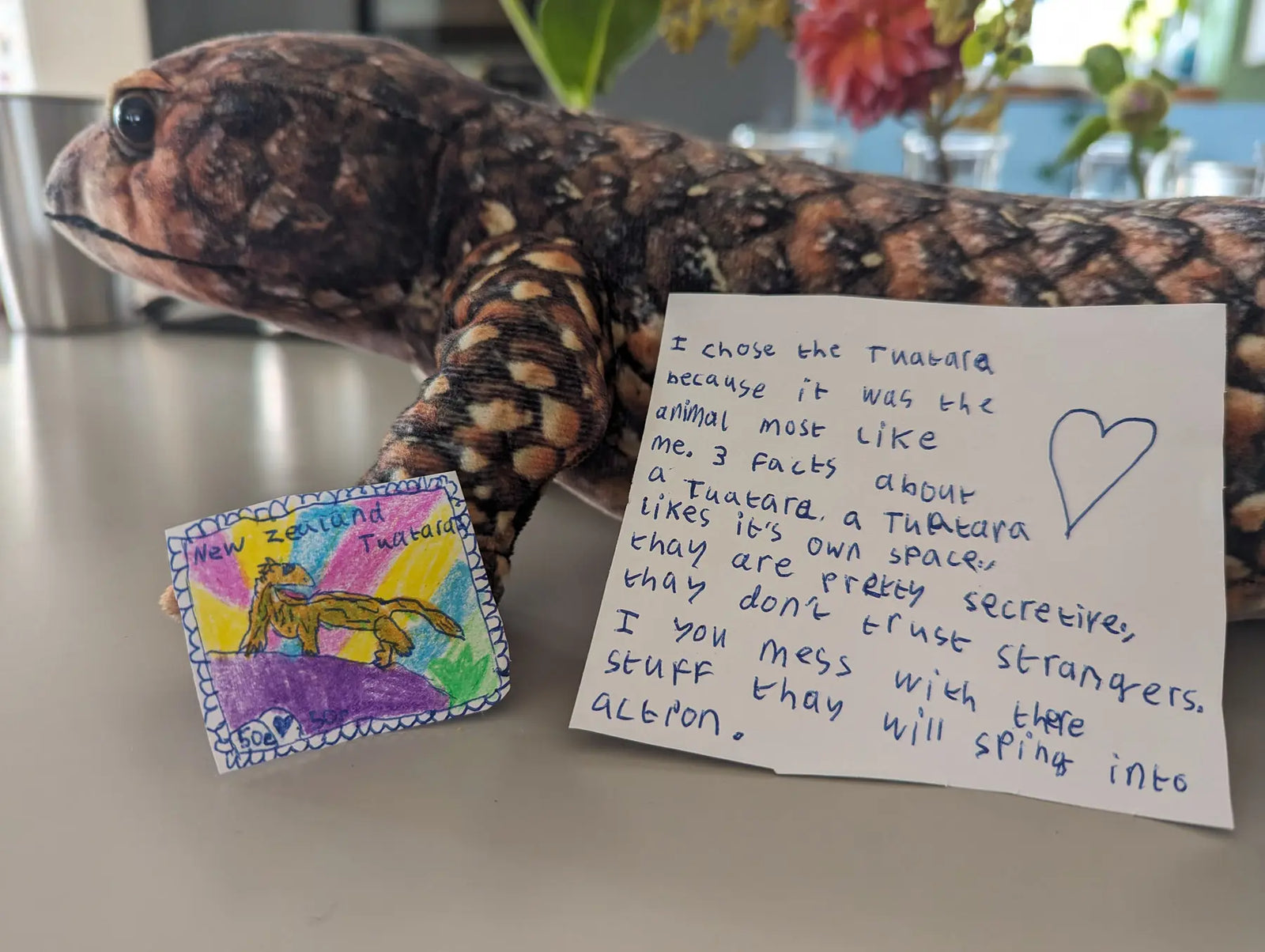Your Cart is Empty
 Spiders are supposed to be spooky and scary, right? Well, we think the little ladybird spider looks more cute than creepy. You’re very unlikely to spot this spotty species in the wild, though. In fact, no one had seen a ladybird spider in the UK for so long that scientists decided it must be extinct – but then it was rediscovered! People are now working hard to protect this amazing arachnid.
Spiders are supposed to be spooky and scary, right? Well, we think the little ladybird spider looks more cute than creepy. You’re very unlikely to spot this spotty species in the wild, though. In fact, no one had seen a ladybird spider in the UK for so long that scientists decided it must be extinct – but then it was rediscovered! People are now working hard to protect this amazing arachnid.
 Ladybird spiders aren’t actually related to ladybirds; they’re named after them because of the male spider’s bright red, spotty body. The four big, black dots on its back are arranged in a pattern just like a four on a die! Arachnologists (people who study spiders) believe this eye-catching design is a warning to possible predators. Male ladybird spiders are mini – about the same size as a ladybird (less than 1cm long). Females are a bit bigger (about 1.5cm) and black all over.
Ladybird spiders aren’t actually related to ladybirds; they’re named after them because of the male spider’s bright red, spotty body. The four big, black dots on its back are arranged in a pattern just like a four on a die! Arachnologists (people who study spiders) believe this eye-catching design is a warning to possible predators. Male ladybird spiders are mini – about the same size as a ladybird (less than 1cm long). Females are a bit bigger (about 1.5cm) and black all over.
 Ladybird spiders live in long, tunnel-like burrows. Females spend their whole lives in these underground homes. Males only come to the surface to search for a mate. After mating, the female lays around 50 eggs in her burrow. Once they’ve hatched, the baby spiderlings are looked after by their mum in a nursery web until she dies about a month later. By the next spring, they are old enough to leave home and make a burrow for themselves. But they don’t go far – young spiders only move about a metre (at most) from where they were born!
Ladybird spiders live in long, tunnel-like burrows. Females spend their whole lives in these underground homes. Males only come to the surface to search for a mate. After mating, the female lays around 50 eggs in her burrow. Once they’ve hatched, the baby spiderlings are looked after by their mum in a nursery web until she dies about a month later. By the next spring, they are old enough to leave home and make a burrow for themselves. But they don’t go far – young spiders only move about a metre (at most) from where they were born!
Ladybird spiders live in north and central Europe, but they are really rare. In the UK, they are only found in Dorset, in the south-west of England. The heathland there provides the perfect habitat for them. But that also creates a problem. Lots of the UK’s heathland has been destroyed over the last 100 years – most of it has been built on or turned into land for farming and forestry. As the amount of heathland has decreased, so too has the number of ladybird spiders. For much of the 20th century, people thought that ladybird spiders had died out completely in the UK. Then, in 1980, a single population of just a few spiders was found. This gave conservationists a second chance to save them from extinction
The UK’s Ladybird Spider Species Recovery Project is led by the charity Buglife. Its goal is to increase the number of populations of ladybird spiders to 20 by the year 2020 by:
 Yes! There are now 14 populations of ladybird spiders living in the UK, and almost 1,000 individual spiders! It’s still one of the UK’s most ENDANGERED species, but the future for the ladybird spider now looks as bright as its body!
Yes! There are now 14 populations of ladybird spiders living in the UK, and almost 1,000 individual spiders! It’s still one of the UK’s most ENDANGERED species, but the future for the ladybird spider now looks as bright as its body!
What’s for Tea, Mum?
Before they leave home, ladybird spiderlings eat their own mother! (OK, that is creepy!)
Superized Snacks!
Ladybird spiders eat insects much bigger than themselves, including beetles twice their size!
Deadly DIY!
Ladybird spiders sometimes decorate their webs with the bodies of their insect prey. Gruesome!
Enjoyed reading this feature? Find out more about minibeasts in issue 48, Magnificent Minibeasts.
Comments will be approved before showing up.
What an incredible fleet of rockets you launched into our inbox this month! Each design showed a different way to turn everyday scraps into something extraordinary. Some rockets looked ready for deep-space exploration, others carried alien crews, and a few were so beautifully decorated they could ha...
Meet the winners of our New Zealand postage stamp competition and explore a gallery of brilliant children’s designs celebrating Aotearoa’s unique wildlife.
Here’s a sneak peek straight from our latest issue of Eco Kids Planet, Wonders Beyond Earth. Wildlife News is where Rhona and Rusty round up the wildest real-world stories from across the planet. Enjoy the read! 🌎 Amazing Photo Entries! The Wildlife Photographer of the Year team gave me a sneak...




Jamie
May 26, 2020
I dont know if this is important, but I saw a ladybird spider at our boatclub in Sandwich, Kent, yesterday ( it was unmistakable and ran across my shoe extremely fast! I left it unharmed.). Only just found oput that these spiders are our rarist spider and found only in a few places in the uk.